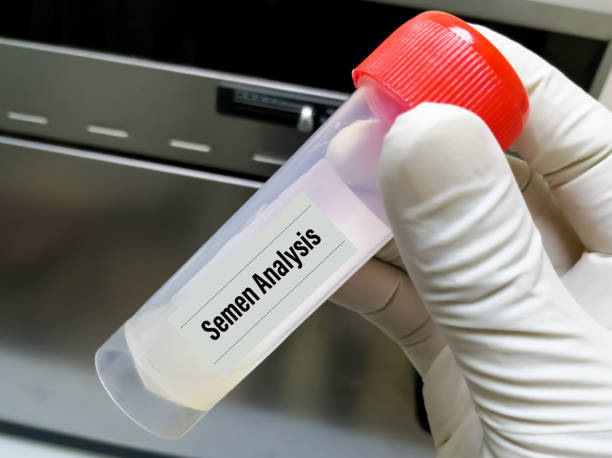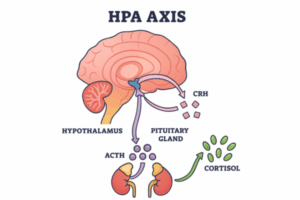Introduction
Are you navigating the complexities of fertility evaluation or seeking confirmation after a vasectomy? Understanding semen analysis explained is often the initial and most informative step. This fundamental male fertility test offers critical insights into the health and viability of sperm, directly impacting reproductive potential. This article will provide a clear and concise explanation of what a comprehensive semen analysis explained actually involves. We will break down the key parameters that laboratories evaluate during a sperm test, such as sperm count, motility, and morphology, and clearly articulate why this detailed fertility analysis for men is so significant. By exploring the essential components of a standard semen analysis explained, our aim is to empower you with the knowledge to better understand your sperm test results and grasp their implications for achieving conception and maintaining overall reproductive health. Many individuals have questions about their fertility journey, and understanding semen analysis explained provides a solid foundation for informed discussions with healthcare professionals.
What is Semen and Why Analyze It?
Semen is far more than simply the sperm cells themselves. It’s a complex biological fluid, the ejaculate, comprising spermatozoa produced in the testicles and a nutrient-rich liquid medium secreted by several accessory reproductive glands. These crucial glands include the seminal vesicles, which contribute a significant portion of the fluid volume and fructose for energy; the prostate gland, providing enzymes and other substances that aid sperm motility and survival; and the bulbourethral glands, which secrete a pre-ejaculate fluid. Understanding this intricate composition is fundamental to appreciating the scope of semen analysis explained. Analyzing the entire ejaculate, not just the sperm, is therefore a critical aspect of a thorough semen analysis explained, as the quality and function of these supporting fluids directly impact the sperm’s ability to fertilize an egg.
Why Semen Analysis Matters: Unveiling Fertility Insights (Semen Analysis Explained)
A semen analysis explained serves several vital purposes. Primarily, it is a cornerstone of infertility testing male, helping to identify potential male factor infertility, which contributes to a significant percentage of couples experiencing difficulty conceiving. By meticulously examining various semen parameters, clinicians can pinpoint issues affecting sperm production, function, or delivery. Furthermore, semen analysis explained plays a crucial role in post vasectomy semen analysis, providing definitive confirmation of the procedure’s success by verifying the absence of sperm in the ejaculate. Beyond these primary applications, a semen analysis explained can also offer a valuable snapshot of a man’s overall reproductive health, highlighting potential underlying conditions that might warrant further investigation.
Key Parameters Tested in a Semen Analysis
When you undergo a semen analysis explained, a trained laboratory technician meticulously evaluates several key parameters to provide a comprehensive assessment of sperm health and semen quality. These measurements offer valuable insights into a man’s fertility potential.
- Semen Volume: The amount of semen produced during ejaculation is a fundamental measurement in semen analysis explained. Normal semen volume typically ranges from 1.5 to 5.0 milliliters. Low semen volume might suggest issues with the seminal vesicles or ejaculatory ducts, while a high volume could indicate dilution of the sperm concentration. Understanding these ranges is a basic aspect of semen analysis explained.
- Sperm Count (Sperm Concentration): This critical component of semen analysis explained determines the number of sperm present in each milliliter of semen (sperm concentration) and the total number of sperm in the entire ejaculate (total sperm count). A normal sperm concentration is generally considered to be at least 15-20 million sperm per milliliter, or a total sperm count of at least 39 million per ejaculate. A low sperm count, a condition known as oligospermia, is a significant finding in a semen analysis explained and can directly impact the likelihood of fertilization.
- Sperm Motility: The ability of sperm to move effectively is crucial for their journey to fertilize an egg. Semen analysis explained assesses both the percentage of sperm that are moving (total motility) and the quality of their movement, specifically if they are swimming forward in a progressive manner (progressive motility). A normal finding is typically at least 40% total motility or 32% progressive motility. Poor sperm motility, or asthenozoospermia, identified in a semen analysis explained, can significantly hinder the chances of natural conception.
- Sperm Morphology: The shape and size of sperm are evaluated in detail as part of semen analysis explained. Laboratories often use strict criteria, such as Kruger’s strict criteria, to assess morphology. A normal sample typically has at least 4% of sperm with a normal shape. Abnormal sperm morphology, or teratozoospermia, as revealed by semen analysis explained, can affect the sperm’s ability to penetrate and fertilize an egg.
- Semen pH: The acidity or alkalinity of the semen is measured on a pH scale. A normal semen pH, as determined in semen analysis explained, typically falls between 7.2 and 7.8. An abnormal semen pH can indicate problems with the function of the reproductive glands or the presence of infection.
- Liquefaction Time: Freshly ejaculated semen is typically thick and gel-like. Liquefaction is the process by which it becomes more fluid. Semen analysis explained includes measuring the time it takes for this to occur, usually within 15 to 30 minutes. Delayed liquefaction, noted in a semen analysis explained, can impede sperm movement.
- Sperm Vitality: This parameter, assessed in semen analysis explained, determines the percentage of live sperm in the sample. This is particularly important when motility is low to differentiate between immotile but living sperm and truly dead sperm. A normal sample usually has at least 58% live sperm.
- White Blood Cells (Leukocytes): The presence of white blood cells in the semen, as part of semen analysis explained, can indicate an infection or inflammation in the reproductive tract. A high number of leukocytes (pyospermia) may negatively impact sperm quality.
- Other Parameters: Depending on the clinical context, a semen analysis explained might also include evaluating fructose levels (to assess seminal vesicle function) or testing for the presence of anti-sperm antibodies, which can interfere with sperm motility and fertilization.
Understanding Your Semen Analysis Results
Receiving your semen analysis explained report can bring a mix of emotions and questions. It’s crucial to remember that the “normal” ranges provided are based on statistical averages and can vary slightly between different laboratories. Therefore, when interpreting your semen analysis explained findings, it’s best to focus on the specific reference ranges provided by the lab that performed your sperm test.
An abnormal result in a single parameter of your semen analysis explained does not automatically equate to infertility. Male fertility is a complex interplay of various factors, and often, multiple semen parameters are considered together. A comprehensive semen analysis explained looks at the overall picture, assessing the combined impact of sperm count, motility, morphology, and other factors. Understanding your semen analysis report involves considering all these elements in relation to each other and your individual medical history.
Due to the natural variability in sperm production and semen quality, healthcare providers often recommend repeat testing over a period of time when discussing semen analysis explained results, especially if initial findings are borderline or abnormal. This helps to establish a more accurate baseline and identify any consistent patterns. Your doctor will be the best resource to help you understand what specific results in your semen analysis explained might suggest regarding your reproductive health male and to guide you on any necessary next steps.
Getting Ready for Your Test: Important Guidelines
To ensure the accuracy and reliability of your semen analysis explained, proper preparation is essential. Your healthcare provider will give you specific instructions, but some general guidelines are typically followed before your semen sample collection. One of the most important aspects is adhering to a period of sexual abstinence, usually for 2 to 3 days but not exceeding 5 days. This allows for optimal sperm concentration and volume. Understanding these guidelines is a key part of ensuring reliable semen analysis explained results.
You will also receive instructions on the correct semen collection methods, which typically involve masturbating into a sterile container provided by the laboratory. It’s crucial to avoid using lubricants or saliva, as these can negatively impact the sperm sample and the accuracy of your semen analysis explained. Make sure to collect the entire ejaculate. Finally, ensure timely delivery of the sample to the lab, usually within 30 to 60 minutes, while keeping it at body temperature, as these factors can affect the integrity of your semen analysis explained.
Factors That Can Affect Semen Analysis Results
- It’s important to recognize that several factors, both temporary and ongoing, can influence the results of your semen analysis explained. A recent illness, particularly one involving a fever, can temporarily lower sperm count and motility. Certain medications can also have an impact on sperm production and function, so it’s crucial to inform your doctor about any medications you are taking before undergoing a semen analysis explained. Lifestyle choices such as excessive alcohol consumption, drug use, and smoking are well-known to negatively affect sperm health and consequently, the findings of your semen analysis explained. Exposure to excessive heat, such as from hot tubs or prolonged laptop use on the lap, and certain environmental toxins can also affect semen parameters evaluated in a semen analysis explained. High levels of stress can also play a role in sperm quality. Furthermore, the frequency of ejaculation in the days leading up to the test can influence the results of your semen analysis explained, which is why the abstinence period is so important.
VII. What Happens After an Abnormal Semen Analysis?
If your semen analysis explained reveals one or more parameters outside the typical reference ranges, your healthcare provider will discuss these findings with you in detail. It’s important to remember that an abnormal semen analysis explained doesn’t automatically mean you cannot conceive. Often, further investigations will be recommended to understand the underlying cause of the abnormal results. These may include repeat semen analysis to confirm the initial findings, as well as hormone tests to assess the function of the reproductive hormones. In some cases, genetic testing male infertility or imaging studies of the reproductive tract might be suggested following an initial abnormal semen analysis explained.
Depending on the specific abnormalities identified in your semen analysis explained, a referral to a urologist specializing in male infertility or a fertility specialist may be necessary to explore potential treatment options and strategies to improve sperm health and increase the chances of conception.
Conclusion
Understanding semen analysis explained is a pivotal step in evaluating male reproductive health, particularly when exploring fertility or confirming the outcome of a vasectomy. This guide has illuminated the intricacies of a comprehensive semen analysis explained, detailing the key parameters such as sperm count, sperm motility, and sperm morphology, and underscoring the significance of this essential male fertility test. For individuals in Lagos, Lagos, Nigeria, seeking a reliable and expert facility for semen analysis explained, The Life Fertility Clinic stands as a trusted option. Their experienced professionals and state-of-the-art laboratory ensure accurate and thorough evaluations.
Remember that the findings of any semen analysis explained, whether conducted at The Life Fertility Clinic or elsewhere, should always be discussed with your healthcare provider for personalized interpretation and guidance tailored to your unique circumstances. If you have any questions or concerns about your reproductive health or the results of a semen analysis explained, consulting with a medical professional is crucial. With ongoing advancements in reproductive medicine, gaining a clear understanding through semen analysis explained empowers you on your path to reproductive wellness.y participate in your reproductive journey.
FAQs
What is the primary purpose of a semen analysis explained?
The main purpose of a semen analysis explained is to evaluate a man’s fertility potential by thoroughly assessing the various characteristics of his semen and sperm. This includes examining the sperm count, motility (movement), morphology (shape), and other factors that can influence the ability to conceive. Additionally, a semen analysis explained is used to confirm the effectiveness of a vasectomy by verifying the absence of sperm in the ejaculate.
How long should I abstain from ejaculation before providing a sample for semen analysis explained?
The generally recommended period of sexual abstinence before providing a semen sample for semen analysis explained is between 2 to 3 days. However, it’s crucial to follow the specific instructions provided by your doctor or the laboratory, as the ideal abstinence window can sometimes vary slightly. Abstaining for too long (more than 5 days) can also affect the results.
What are generally considered normal values in a semen analysis explained?
Typical normal values in a semen analysis explained include a semen volume of at least 1.5 milliliters, a sperm concentration of at least 15 million sperm per milliliter, total sperm motility of at least 40%, and at least 4% of sperm having a normal shape (morphology). It’s important to note that these are general guidelines, and the specific reference ranges used by the laboratory performing your semen analysis explained should be considered the most accurate.
If I have an abnormal result in my semen analysis explained, does it mean I am infertile?
Not necessarily. An abnormal finding in one or more parameters of your semen analysis explained does not automatically mean you are infertile. Fertility is complex, and various factors contribute to the ability to conceive. Repeat testing is often recommended to confirm initial results, and further evaluation may be needed to understand the underlying cause of any abnormalities identified in your semen analysis explained.
Where is a semen analysis explained typically performed?
A semen analysis explained is usually conducted at a hospital laboratory, a specialized fertility clinic like the Life Fertility, or a dedicated diagnostic centre. Your primary care physician or a specialist will provide you with a referral to an appropriate facility to undergo your semen analysis explained.
Are there any specific things I should avoid before my semen analysis explained?
Yes, in addition to adhering to the recommended abstinence period, it’s generally advised to avoid excessive alcohol consumption and drug use in the days leading up to your semen analysis explained. If you are taking any medications, inform your doctor, as some medications can potentially affect sperm parameters. Try to minimize stress and avoid exposure to excessive heat in the genital area.
How long does it usually take to receive the results of a semen analysis explained?
The time it takes to get the results of your semen analysis explained can vary depending on the laboratory and the specific tests performed. Typically, you can expect to receive your results within a few days to a week after providing the semen sample. The laboratory or your referring physician will usually inform you about the expected timeframe.




